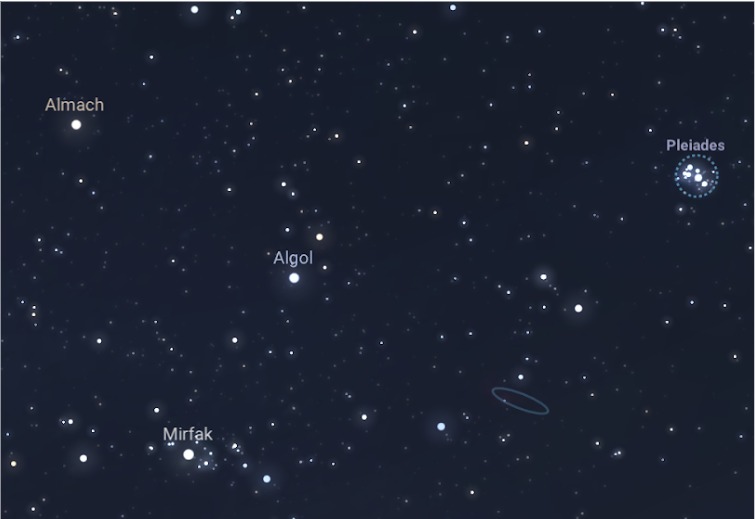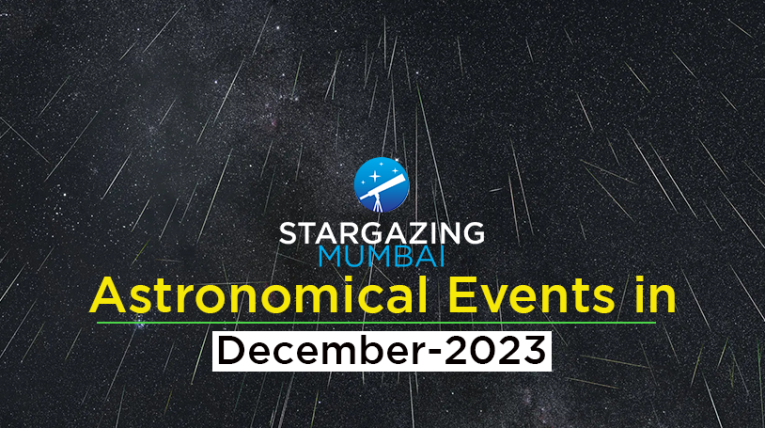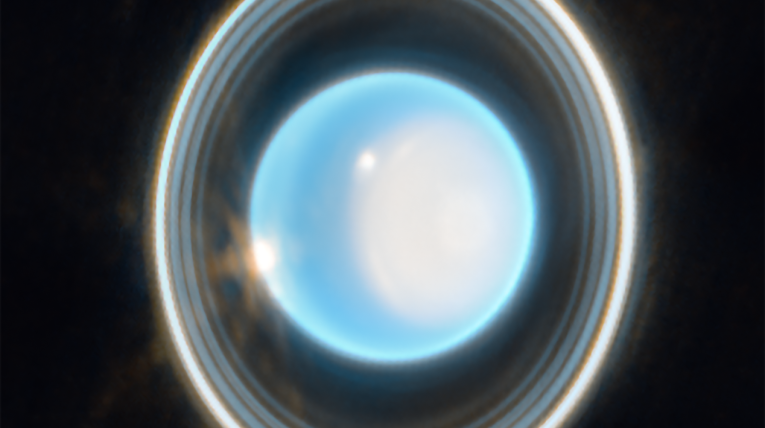Imagine a big curtain of monsoon clouds, covering the night sky like a cozy blanket. But as the monsoon bids farewell, it’s like someone pulling that curtain away, revealing the cosmic performance in the vast theater of the night sky. From October to January, this post-monsoon period transforms the night sky into a mesmerizing theater of stars, planets, and celestial wonders. In this blog, we embark on a journey to witness the magic that unfolds when the monsoon curtain lifts, inviting stargazers to gaze upon the gems that adorn the winter sky. Let’s take a look at the top 10 winter deep sky objects that will be visible from India.
1. The Orion Nebula (M42)
The Orion Nebula is located in the constellation Orion with a distance of about 1344 light-years from Earth. It is a star nursery and one of the brightest nebulae visible to the naked eye with a magnitude of 4.0. It’s a magnificent active star formation zone that may be seen with binoculars or a small telescope

2. The Andromeda galaxy (M31)
Our neighboring spiral galaxy, the Andromeda Galaxy, can be seen in the constellation Andromeda. Located about at a distance of 2,480,000 light years away from Earth, it appears as a faint, extended patch of light to the naked eye. Binoculars or telescopes are required to see its actual structure.

3. Pleiades (M45)
The Pleiades, also referred to as the Seven Sisters and known in India as Krittika, the wives of the seven wise men named the ‘Seven Rishis’ or ‘Seven Sages’. It is an open star cluster in the constellation Taurus and is about 444.2 light years from earth. It can be seen with the naked eye and resembles a compact, brilliant cluster of stars. More stars within the cluster can be seen with binoculars or a small telescope.

4. Crab nebula (M1)
The Crab Nebula is known to be the brightest supernova remnant located in the constellation Taurus and is about 6,523 light years from Earth. It is difficult to see without a telescope, but it is a fascinating object with an interesting past.

5. Beehive cluster(M44)
The Beehive Cluster is one of the nearest open clusters to Earth at about 577.3 light years away from Earth located in the constellation Cancer. It got its name because of its appearance like a hive of bees and it contains a larger population of stars holding around 1,000 stars. It’s a breathtaking sight through binoculars or a small telescope.

6. Sirius
Sirius is the brightest star visible in the night sky with a magnitude -1.33 and is located in the constellation of Canis Major at about 8.611 light years away from Earth. Although it may appear as a single bright spot, it is actually a binary star consisting of Sirius A and Sirius B. Its striking brilliance and prominence make it a well-known celestial object across cultures and a key navigational reference in the night sky.

7. Salt and pepper cluster (M37)
Messier 37 is part of a trio of open clusters in Auriga, with Messier 36 and Messier 38 being the other two. Situated about 4,500 light-years away from Earth, M37 is one of the richest and most populous open clusters. It contains a diverse array of stars, including several red giants, and is easily visible with binoculars or a small telescope.

8. The Double Cluster (NGC 869 and NGC 884)
The Double Cluster is a stunning pair of open star clusters consisting of NGC 869 and NGC 884, often referred to as h and chi Persei respectively. It is visible to the naked eye and is located in the constellation Perseus. Individual stars in these clusters can be seen with binoculars or a telescope.

9. shoe-buckle cluster(M35)
M35, or Messier 35, is an open star cluster located in the constellation Gemini. Through a telescope, M35 reveals a rich field of stars, and individual stars can be resolved. The cluster is located at a distance of 2772 light-years from Earth and is often noted for its bright stars and overall attractiveness.

10. Algol
Algol is a bright star located in the Perseus constellation and is also known as Beta Persei. The name “Algol” is derived from the Arabic term “al-Ghul,” which means “the demon” or “the ghoul,” possibly reflecting the star’s variable nature. Algol is a fascinating celestial object that has been observed and studied for centuries.

Before we wrap up, there’s a special mention worth exploring…
11.Neptune and Uranus
With binoculars or a telescope, these two distant ice giant planets may be observed. Uranus is in the constellation Aries, whereas Neptune is in the constellation Aquarius.
Exploring these winter-deep sky objects, whether through binoculars or a telescope, offers a connection to the beauty of our universe. So, bring out your telescopes and let winter sky be your gateway to the marvels of the universe.



